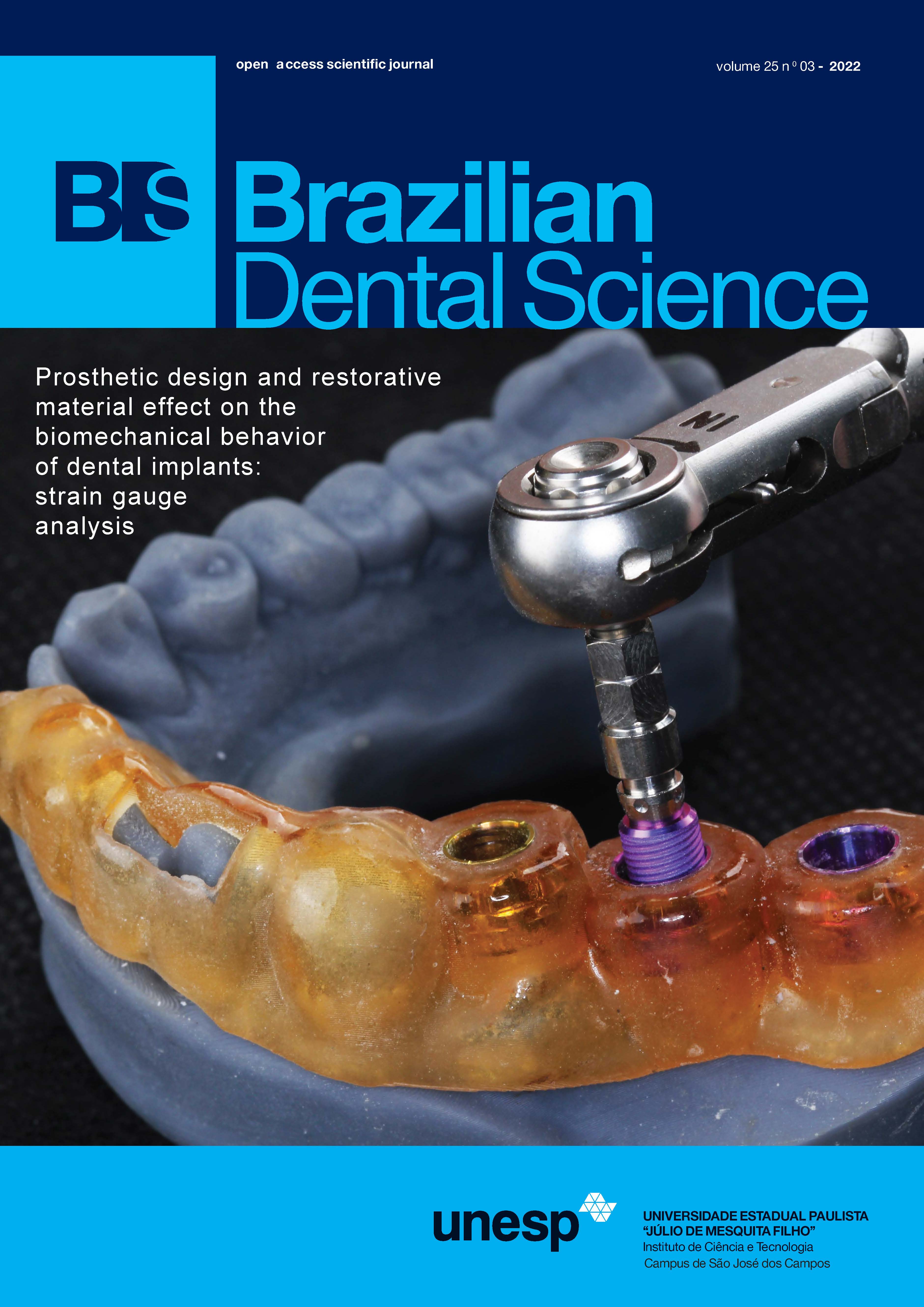Influence of different separating mediums applied on the immediate dentin sealing in the tensile strength of temporary restorations
DOI:
https://doi.org/10.4322/bds.2022.e3139Abstract
Objective: To evaluate the ability of different separating mediums to prevent adhesion between provisional
restorations and hybridized dentin surfaces when used with the Immediate Dentin Sealing technique (IDS).
Material and Methods: 120 extracted human teeth — 40 premolars and 80 molars — were selected to integrate
acrylics samples separated into 4 different groups (n=10) according to the separating medium used for IDS
protection. Forty samples were made of three teeth mounted in a self-cure acrylic resin block (Jet, Classic, São
Paulo, Brazil) arranged side by side, simulating the positioning and proximal contacts present in the dental arch
between the second premolar, first molar and second molar. A standard dental preparation for ultra-thin occlusal
veneer was performed and complete occlusal dentin exposure was achieved by selective removal of the occlusal
enamel with a high-speed conical round burr (Code: 1801.4138 FG, KG Sorensen, Medical Burs Ind. e Com. de
Pontas e Brocas Cirúrgicas Ltda, São Paulo, Brazil). Dentin hybridization were performed on the control group
and 3 different groups of separating mediums (n=10): PC—commercial provisional separating agent (Pro-V
Coat, Bisco, Schaumburg, USA); GG—glycerin gel (K-Y Gel; Johnson & Johnson Industry and Commerce LTDA,
São Paulo, Brazil); PJ—petroleum jelly (Rioquímica, São Paulo, Brazil). Provisionalization were manufactured
on the prepared teeth. After 2 weeks, the tensile test was performed, and the analysis of the failure pattern was
performed by 3D laser confocal microscopy and Scanning Electron Microscopy (SEM). The data were analyzed
with the 1-way ANOVA and the Tukey test (a = 0.05). Results: Significantly lower tensile strength values were
found for the commercial provisional separating agent (30.39 ± 10.01 N) compared to others (p < 0.05).
Conclusion: The commercial provisional separating agent showed greater effectiveness on protecting hybridized
dentin against the provisional restorations.
KEYWORDS
Dental bonding agent; Dental restoration temporary; Immediate dentin sealing.
Downloads
Downloads
Published
How to Cite
Issue
Section
License
Brazilian Dental Science uses the Creative Commons (CC-BY 4.0) license, thus preserving the integrity of articles in an open access environment. The journal allows the author to retain publishing rights without restrictions.
=================




























